A Consumer Guide to the Trailing Edge: May, 2013
Recycled Goods (#108)
by Tom Hull
This edition started with Spin's recent feature, "Top 100 Alternative Albums of the 1960s" (list only, original link, which gets you short reviews if you're patient enough). When I originally collected the list, I tacked on my grades and found that I had only heard/rated 42 of the 100. I took that as a challenge, and have since reduced my unrated list from 58 to 22. I've heard at least some of the remaining music on compilations (e.g., Desmond Dekker, Mulatu Astatke). I was able to come up with a couple items not on Rhapsody, and sometimes used Rhapsody but working back from later reissues. The reviews below sometimes consider more than one reissue, but often just focus in on the original release (in whatever state of remastering is current, not that you can tell much listening to mp3s on a computer).
Any list can be nitpicked, and this one is especially vulnerable. There's no obvious meaning for "alt" -- a term that Spin treats as its calling, almost a synonym for interesting -- in the 1960s, so they've picked a lot of things that are just obscure (and the top of the list isn't even that: the Velvet Underground, Stooges, Flying Burrito Brothers, Mothers of Invention, MC5, Captain Beefheart, and Pink Floyd were at least semi-popular and by now legendary, as is virtually everything on the Nuggets compilation. Their picks among singer-songwriters are a very mixed bag (Leonard Cohen, Nick Drake, Van Dyke Parks, Scott Walker, but no Tim Buckley, Tim Hardin, or Randy Newman). They picked up some krautrock but paid very little attention to England, missing proto-prog (Soft Machine, King Crimson) and much else (Love Sculpture, The Move). And while they did a fair job of rummaging through American garage rock, they missed the start of a postmodern retro movement -- I'd say the best really alt-rock record not on the list is the Flamin' Groovies' Supersnazz (1969), a fully-realized masterpiece at a time when Alex Chilton and Dave Edmunds were only beginning to get their shit together.
Still, less than half of the list albums were rock. And, needless to say, stayed well clear of black music -- exceptions were proto-rap Watts Prophets, New Orleans funk band the Meters, and if you want to be generous, Rotary Connection -- and didn't touch country or blues (although they picked up a few folkies). Most of the rest of the list was filled out from three slices (13-16 records each): avant-jazz, postclassical electronica, and world music.
The latter is limited by availability, especially from Africa where only Babatunde Olatunji and Mulatu Astatke got noticed (no Franco? Sunny Ade? Rochereau? Fela? Nico? Bebey?) -- Miriam Makeba was the best known African star, but not exactly alt. Desmond Dekker was the only Jamaican listed, but Bob Marley, Toots Hibbert, Gregory Isaacs, and many others finally noticed in the 1970s were already active. So what did make the list? Three albums each from France and Brazil -- the latter much more alt than the bossa nova craze of 1963-65, the former less so -- plus two boogaloo albums from New York and some field recordings on Nonesuch's Explorer Series.
The avant-jazz list hits a lot of the decade's high points, including five Penguin Guide crown albums (Ayler, Braxton, Brötzmann, Coltrane's Ascension, and Dolphy), and many more picks will be familiar to Penguin Guide followers -- even obscure ones like AMM and Spontaneous Music Ensemble. (But had they followed Penguin Guide more closely they should have picked better records for Taylor -- Nefertiti vs. Unit Structures -- and especially for Sun Ra (and for that matter Ornette Coleman).
On the other hand, they missed lots of things too, especially near the dividing line (no Andrew Hill? Sam Rivers? Archie Shepp? Don Cherry? Steve Lacy? Horace Tapscott? Joe McPhee?). Amalgam's Prayer for Peace was one of the decade's best (and another crown album). I'd have been tempted to include Coltrane's A Love Supreme, which broke a lot of new ground, but they most likely left it out because everyone so admires it now.
The other big category remains obscure: early electronic music, mostly done by modernist composers brought up in the euroclassical curriculum -- Harry Partch is only a partial exception in that he didn't go in for electronics much, but invented his own instruments to explore his unique microtonal tunings. Riley and Reich went on to gather fairly large followings (as did Philip Glass, whose first record was 1973), but most of these names remain obscure. Some interesting records made the list, although you might be better off searching out OHM: The Early Gurus of Electronic Music (1937-82 [2000], Ellipsis Arts, 3CD) for a more systematic intro.
I mostly spent the month trying to catch up with the Spin list, but I couldn't help but follow occasional threads. In some cases I didn't find the listed record but reviewed something else that I did find (Axelrod, Hardy, Oliveros, Sonics). In others, I helped myself to an extra record to get a broader idea (Sanders, Subotnick, 13th Floor Elevators, Walker). In most cases I tried to focus on the original LP rosters, although in a couple cases I cite more recent reissues and try to break them down. In the process of doing this, I also ran across non-alt records I felt like checking out -- e.g., early LPs by Cream, the Lovin' Spoonful, and the Who -- so I saved them for a second 1960s-themed Recycled Goods, probably next month. And in a case like Clifford Thornton makes more sense here -- not that I won't run across more like it next time.
Special thanks to Cam Patterson for helping me track down some of this music.
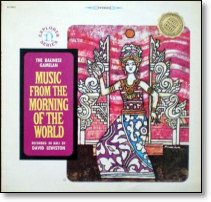 |
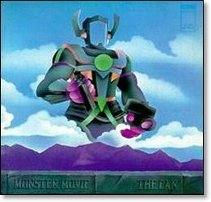 |
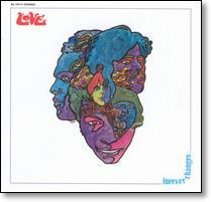 |
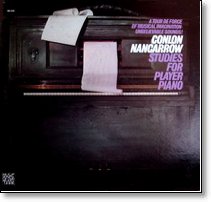 |
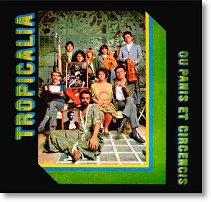 |
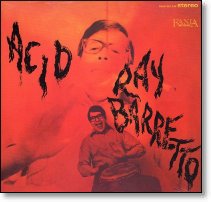 |
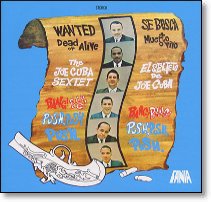 |
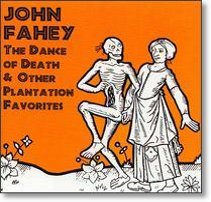 |
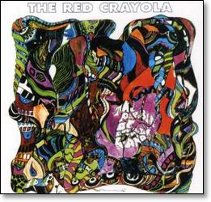 |
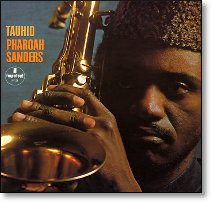 |
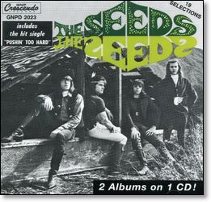 |
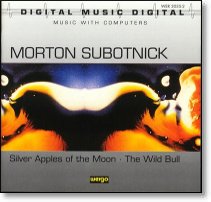 |
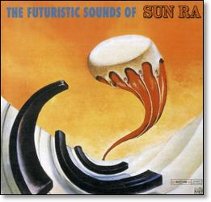 |
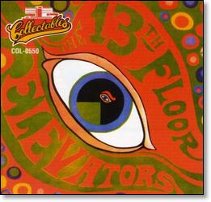 |
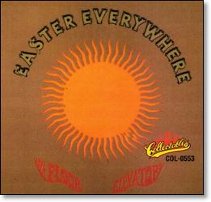 |
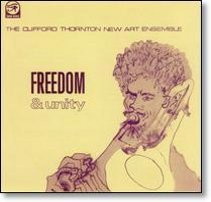 |
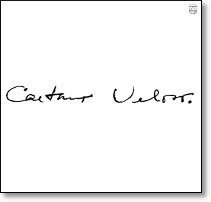 |
The Balinese Gamelan: Music From the Morning of the World (1966, Nonesuch): An early entry in Nonesuch's Explorer Series, and as such one of the first serious attempts to discover world music beyond the usual Latin and Irish confines, David Lewiston's field recordings from Bali have an anthropological purity to them: clanging, jangly percussion; odd-pitched strings; occasional high-and-lonesome vocals. Reissued twice with different covers and subtitles, the prize is the 1988 Nonesuch CD with two extras, notably the 22:08 "Ramayana Monkey Chant," but Rhapsody has the 2003 Nonesuch reissue, Indonesia: Bali: Music From the Morning of the World, which reverts to the LP lineup, time 41:20. A- [R, dl]
Can: Monster Movie (1969, Mute): My brief experience with the Krautrockers spanned three overly regarded 1972-74 albums -- Ege Bamyasi, Future Days, Soon Over Babaluma -- when they were turning into the continent's Yes, so I was surprised by all the variety shown in The Lost Tapes surprised me, and this first debut album shows why those were outtakes. The guitar is derivative, but from the Velvet Underground, and Malcolm Mooney's vocals offer a frenetic if not fully integrated cross between Lou Reed and Syd Barrett, but what was uniquely their own was the drumming that drives the second side to 20:27. A- [R]
Karen Dalton: It's So Hard to Tell Who's Going to Love You the Best (1969, Capitol): Folk singer, of Cherokee descent, born in Oklahoma, had two kids by 19, when she ran away to New York. This was her first album (although some earlier tracks were eventually released as 1966, and there's a live tape from 1962) and she didn't last long, living on the streets, dying with AIDS; there is a bit of Billie Holiday in her voice, but her guitar rarely connects with it -- best chance is on simple blues like "It Hurts Me Too," otherwise this takes a lot of effort. B- [R]
Love: Forever Changes (1967 [2001], Elektra/Rhino): Los Angeles group led by singer-guitarist Arthur Lee, third album, widely regarded as a landmark -- number 40 on Rolling Stone's 2003 list of 500 among numerous others (see Wikipedia for pages of such testimony) -- reputation enough that I gave it a second spin after being dismayed by the first. I didn't (well, still don't) get why someone with his guitar chops would drape most of the album in strings, a sort of ornateness that gets dubbed baroque pop -- not that you really wind up thinking he's so prissy. More like he just wants to let the melodies sneak up on you. My CD has bonus cuts I could do without, and, bought used, lacks a booklet I wish I had. A-
Conlon Nancarrow: Studies for Player Piano (1969, Columbia Masterworks): Avant composer from the Arkansas side of Texarkana, joined the CP in the 1930s and fought in the Abraham Lincoln Brigade in the Spanish Civil War against Franco -- those who did were branded "prematurely anti-fascist" and regarded as security risks by the US, so he moved to Mexico, where he lived until his death in 1997. These piano pieces are richly abstract, the speed and difficulty handled by punching them into a player piano -- the result kind of like Jerry Lee Lewis pounding his way through Varèse, or Cecil Taylor playing boogie woogie. 1750 Arch Records reissued this in 1977, followed by three more LP volumes, Complete Studies for Player Piano, and Wergo came up with a fifth volume in 1988, followed by CD reissues. Rhapsody's version is the 4CD 2008 release on Other Minds: too much for a single setting, but I can't say as there's any drop off in quality. A- [R]
Tropicália: Ou Panis Et Circensis (1968, Philips): Mark Kurlansky covered the various student revolts in eastern and western Europe in his book 1968: The Year That Rocked the World, and paid heed to tumultuous events in the US, but one important place he missed was Brazil. Tropicália was as politically charged as any music in the world, with Caetano Veloso the theoretician and Gilberto Gil the melodist -- they dominate this compilation. While I can't vouch for the lyrics, I will venture that this builds on MPB like Sgt. Pepper and Their Satanic Majesties Request moved beyond the early Beatles and Stones. I wouldn't attribute any of those leaps to psychedelics, when revolution was so much more mind-blowing. A [dl]
Briefly Noted
Amon Düül II: Phallus Dei (1969 [2006], Inside Out/Revisited): First album from the Krautrock band, split off from the original Amon Düül commune, a mix of layered guitars and keyb, violin and vibes, percussion from all over, chants, charges, and choirs; the title track runs 20 minutes, complex and enchanting; the reissue moves it up front, balancing it off with two bonus tracks, 10 minutes each, extending the vibe. B+(***) [R]
David Axelrod: Songs of Experience (1969, Capitol): A producer at Capitol in the late 1960s, this was the second album he put his name to (after Song of Innocence); instrumental, the sort of high schmaltz you often get with movie music, with at least one cut ("The Fly") transcending the level of dreck. B [R]
Ray Barretto: Acid (1968, Fania): Congalero from Spanish Harlem, with over sixty records a major figure in salsa and Latin jazz from 1960 to his death in 2006; this is widely lauded, as good a place to start as any; two English lyrics don't spoil the fun, but what you need to hear are the intense rhythm rolls. A- [R]
Blue Cheer: Vincebus Eruptum (1968, Philips): Blues-rock band from San Francisco, sort of an American version of Cream although none of the trio were musicians of the same caliber; starts with a dense "Summertime Blues," good for a cheap hit; no real hooks in the rest -- they just grind it out. B+(*) [R]
Bonzo Dog Doo-Dah Band: Gorilla (1967, Liberty): Art school/trad jazz refugees, originally the Bonzo Dog Dada Band but they decided to go for parody and/or oom-pah -- probably too many tuba players in the band; not sure how interesting a band can be that credits Adolf Hitler on vibes and wastes one of their longest songs boring you with a complaint about being bored. B+(*) [R]
The Joe Cuba Sextet: Wanted Dead or Alive (Bang! Bang! Push, Push, Push) (1967, Fania): Born in New York in 1931, of Puerto Rican descent, Cuba played congas and developed an abbreviated, upbeat strain of salsa, making him "The Father of Latin Boogaloo"; the refrains here are almost cartoonish, which works for novelty, but the rhythm is lightyears beyond what we're used to. A- [R]
Tod Dockstader: Eight Electronic Pieces (1961, Folkways): Musique concrète pioneer, took his fascination with radio noise as a start and came up with machines to orchestrate those noises; like much early electronic music, the emphasis is on sound over melody or rhythm -- that he comes up with any is part of the surprise. B+(*) [R]
The Electric Prunes: I Had Too Much to Dream (Last Night) (1967, Reprise): The title cut was a minor hit (and future nugget), by far the most impressive thing here, although the trad jazz throwback "Tunerville Trolley" is a hoot, and the filler attests to the band's integrity, even where the psychedelic fuzz is muted. B+(**) [R]
The Electric Prunes: Release of an Oath (1968, Reprise): Nominally the group's fourth album, but the original musicians had all been swapped out, replaced by composer David Axelrod and producer Dave Hassinger, who built this out of Jewish and Christian liturgy, like their previous Mass in F Minor but this 24:46 album has a much loftier reputation; B [R]
John Fahey: The Dance of Death & Other Plantation Favorites (1964 [1999], Takoma): The guitarist's first album, original pieces (plus one by Clarence Ashley) rather than the promised historical dip, not that history doesn't dwell everywhere Fahey picks; the CD adds four covers, offering the taste of recognition. A- [R]
Brigitte Fontaine: Comme à la Radio (1969, Saravah): French singer, her voice (here at least) almost as declamatory as Nico's, a minimalist effect playing off the exotica of the band -- otherwise known as the Art Ensemble of Chicago. B+(***) [R]
Kim Fowley: Outrageous (1968, Imperial): Son of a Hollywood actor, good enough to launch a career based on playing off his connections, gaining fame as someone who could get away with crap no one else could not so much because he could conceptualize it as because he was utterly shameless -- one such idea was releasing an LP of blank vinyl; this record took more effort, but once you learn a few blues chords and can claim incoherent screaming as a freak out and drugged out ranting as insight, it's really not what you can call work; and lest he accidentally slipped anything serious in, the title discounts it. C- [R]
The Godz: Contact High With the Godz (1966, ESP-Disk): New York folkie band with a half-dozen albums albums on this "anything the artist wants" label -- no relation to the metal band founded in 1978 in Ohio -- these nine songs run 25:01 including the 1:34 Hank Williams coda, their most memorable message "all I wanna do is lay in the sun," repeated 2:56 with strum, bang, and harmonica. B+(***) [R]
Françoise Hardy: Françoise Hardy (1963, Disques Vogue): French singer-songwriter, a star at home -- the preferred word now seems to be "icon" -- but no one speaks French here so she's exotic enough to be considered "alt"; Spin listed her debut, not this -- the second of five eponymous 1962-65 albums and the only one I could find, but I'm struck by how stock the arrangements sound. B+(*) [S]
Pierre Henry: Messe Pour Le Temps Présent (1967, Philips): Henry's musique concrète mass, co-written by Michel Colombier, starts with "Psyché Rock," then "Jericho Jerk" and "Teen Tonic" -- they rock like "Telstar," earning the sobriquet les jerks électroniques; the other pieces on what was originally 2LP and in 1997 were expanded into 2CD are indeed concrète -- scratchy, abstract, atmospheric, which is not such a bad thing; note that even the Roman Catholic Church, under Vatican II, was hipper than it is now. B+(***) [R]
The Meters: The Meters (1969, Josie): New Orleans funk band, with Art (as opposed to Aaron) Neville they didn't sing much, but pumped the organ, scratched out guitar and bass lines, and had Ziggy Modeliste on drums, and Allen Toussaint producing. B+(**) [R]
The Monkees: Head (1968, Colgems): Soundtrack to a film designed to reinvent the TV mophead group as something else -- you were expecting, maybe, Sgt. Pepper? With its skits and bits of fractured dialogue, more like The Who Sell Out, except more literal, a going-out-of-business sale: "hey hey we are the Monkees/you know we love to please/a manufactured image/with no philosophies." B+(**) [R]
The Monks: Black Monk Time (1965 [2009], Light in the Attic): Garage rock band formed by GIs stationed in Germany, cut one obscure album, turned into a cult item after a 1994 reissue, with tributes and films since; has some definite sonic quirks, but plays like a long joke, and wears awful thin in the bonus tracks (e.g., "Cuckoo"). B+(*) [R]
Nico: The Marble Index (1969, Elektra): Christa Päffgen, a German fashion model who gained 15 minutes of fame as an Andy Warhol superstar, a more on the first Velvet Underground album, and maybe a few more for her bleak recording career; this was her second, with John Cale orchestrating, his high church organ mode at times breaking into chaos, her voice chilled, strucken down. B+(**) [R]
Pauline Oliveros: Four Electronic Pieces, 1959-1966 (1959-66 [2008], Sub Rosa): Long ones, too, running 14-19 minutes, made up of wave generators and variable-speed tape machines, mostly noise, much of it sounding like tuning in radio tones only with a bit less fuzz, and at least some of it headache-inducing, or at least way too cathartic for everyday listening -- a more novel, and more artful, Metal Machine Music; that, of course, was the point. B+(**) [R]
Van Dyke Parks: Song Cycle (1968, Warner Brothers): Choir boy turned LA schmoozer-songwriter, played with the Byrds and Mothers of Invention but was better known for his work (and drug recreation) with Brian Wilson during the Beach Boys' darkest (and weirdest) days; first album, twelve songs, some cartoonish, some I'm not even that sure of (there's AMG again, with "Baroque Pop" ready to explain everything, followed by "Psychedelic/Garage"). C+ [R]
Pearls Before Swine: One Nation Underground (1967, ESP-Disk): Singer-songwriter Tom Rapp is basically a mild-mannered folkie, but his use of Hieronymous Bosch details for album covers made quite an impression on the LSD-addled -- turns out that psychedelia, like beauty, is in the pretty much mind of the beholder. B [R]
The Pentangle: Basket of Light (1969, Transatlantic): English folk-rock supergroup, with Bert Jansch and John Renbourn on guitar and Jacqui McShee singing; third album, the guitars gently turning over one another, the soprano vocals sinking deepest into the traditional pieces. B+(**) [R]
Perrey-Kingsley: The In Sound From Way Out! (1966, Vanguard): Jean-Jacques Perrey, from France, and Gershon Kingsley, from Germany, play early synthesizers on jaunty little tunes they wrote, mostly punctuated with extra synth sounds that seem inspired by Spike Jones; electronic music was in its infancy in the 1960s, but rarely has it been done with this much juvenile mischief. B+(**) [R]
The Red Crayola: The Parable of Arable Land (1967 [1993], Collectables): Later Red Krayola, a band which more/less still exists, at least through its latest (2010) release; essential member is Mayo Thompson, the guitarist who also played for Pere Ubu through the 1980s; the usual classifications fall way short here: while the "free form freak-out" pieces here aren't as chaotic as the name suggests, they are very unconventional, the melodic elements skewed, percussion all over the place, atonal and arrhthmic and all that, with quasi-songs slipped in between -- "War Sucks" for one. A- [R]
The Red Crayola: The Parable of Arable Land (1967 [2011], Sonic Boom, 2CD): Consumer options include the bare bones 1993 CD on Collectables, a twofer on Charly that adds their inferior second album, God Bless the Red Krayola and All Who Sail in Her, and this vastly expanded edition; this upholds your interest, a case of "more is more," but caveat emptor: most of the more is redundant, including both mono and stereo mixes of the album, plus one with the songs minus the "freak outs." B+(***) [R]
Rotary Connection: Rotary Connection (1968, Cadet Concept): I'd rather call them an experiment than experimental: bassist Phil Upchurch had some minor jazz cred, and singer Minnie Ripperton was black but didn't sound like it (or much of anything else); mostly they covered contemporary hits -- "Lady Jane," "Soul Man," "Like a Rolling Stone," "Didn't Want to Have to Do It" -- twisting and tweaking them but not into anything very interesting. B [R]
Pharoah Sanders: Tauhid (1966, Impulse): Very much under John Coltrane's spell this early on -- Albert Ayler liked to refer to Coltrane and Sanders as "the father" and "the son," mostly because he saw himself as "the holy ghost" -- struggling on two long pieces (and one short one) spanning the earth and beyond, assisted by a quintet that included Sonny Sharrock on guitar and Dave Burrell on piano. A- [R]
Pharoah Sanders: Jewels of Thought (1969, Impulse): Two side-long pieces, the saxophonist sounding superb except when he occasionally coughs up a chunk of lung, which can be harrowing; the double basses can hold your attention for long vamps, and percussion is suitably exotic, and Leon Thomas alternately warbles and wows. B+(***) [R]
The Seeds: The Seeds (1966 [1987], GNP/Crescendo): One of the Nuggets bands -- "Pushin' Too Hard" was theirs -- managed to maintain their guitar-punk sound through eleven sharp cuts, and the CD reissue doesn't lose much tacking on their second album, A Web of Sound, stretching out to a 14:27 "Up in Her Room." A- [R]
The Sonics: Introducing the Sonics (1967, Jerden): Tacoma, WA, garage band, got a reboot after their 1965 debut Here Are the Sonics!!! stiffed, repeating their local hit singles ("The Witch" and "Psycho") but with different filler -- a couple new originals ("High Time" is the nugget) and some r&b replacing the familiar r&r covers. B+(**) [R]
Alexander Spence: Oar (1969, Columbia): Canadian guitarist, sometimes drummer, played in Quicksilver Messenger Service, Jefferson Airplane, and Moby Grape before he flipped out on acid, was diagnosed as schizophrenic, and cut his one-and-only solo album; intended as a demo, comes off as a slow countryish plaint, except for moments when it flips into something else. B+(*) [R]
Morton Subotnick: Silver Apples of the Moon (1967, Nonesuch): First album from one of the pioneers of electronic music, the two 15-minute sides are composed of synthesized blips and bleeps, a fairly minimal palette by later standards, yet cohere remarkably, breaking ground both as technology and as music. A- [R]
Morton Subotnick: The Wild Bull (1968, Nonesuch): Second album, less immediately appealing but with lots more drumlike sounds, scattered drones, some entering from far stage left, as the composer is finding more angles to the music; short, a bit less consistent. B+(***) [R]
Morton Subotnick: Silver Apples of the Moon/The Wild Bull (1967-68 [1994], Wergo): But not enough to drag this historically important twofer down. A- [R]
Sun Ra: The Futuristic Sounds of Sun Ra (1961 [1962], Savoy): The Arkestra lands in New York, if not from Saturn at least from Chicago, and they celebrate with a little bit of everything they do, including an odd vocal, flute solos, boogie piano, and percussion all over the place -- nothing electronic squiggles if that's what you expect by futuristic, but still way ahead of the times. A- [R]
The 13th Floor Elevators: The Psychedelic Sounds of the 13th Floor Elevators (1966 [1993], Collectables): Legendary garage band from Austin, TX; spawned Roky Erickson, or vice versa, but while Erickson maintained his reputation for idiosyncrasy, this sounds more like a band, the guitar thick and crunchy, the psychedelic fuzz some kind of sonic parlor trick, "You're Gonna Miss Me" the hidden nugget. A- [R]
The 13th Floor Elevators: Easter Everywhere (1967 [1993], Collectables): The sonics are less gimmicky -- just as well, they have their own sound anyway, although it's not solid enough to wholly capture the Dylan cover, but it works when they go long for two of their most remarkable songs, "Slip Inside This House" and "Postures (Leave Your Body Behind)." A- [R]
The 13th Floor Elevators: Bull of the Woods (1968 [1993], Collectables): Third album, "noted for its moody, dreamy, and fuzzed-out psychedelic sound," which means none of the songs particularly stand out or even come through all that clearly. B+(**) [R]
The Clifford Thornton New Art Ensemble: Freedom & Unity (1967 [2001], Atavistic): First piece was named "Free Huey" but the politics were less clear, mostly a desire to compose complexity and redouble it through improv; leader plays valve trombone, which with two bases holds the scattered horns and vibes together, barely. A- [R]
Townes Van Zandt: For the Sake of the Song (1968, Poppy): The Texas singer-songwriter's first album, shows a promising sense of detail but it's as flat and repetitive as the dust-swept plains, the songs all merging into a strange sameness. B [R]
Caetano Veloso: Caetano Veloso (1969, Philips): The second of several eponymous albums (sometimes labeled for its first song, "Irene"), the vocals recorded in jail with accompaniment added later, ranging from rockish fuzz guitar to slabs of string orch, with a few songs in English; despite everything, this has a lot of presence. A- [dl]
Scott Walker: Scott (1967, Smash): Scotty Engel, changed his surname when he joined the Walker Brothers, kept it when he split (given the governor Wisconsin, perhaps he should reconsider, but he has a much larger following in the UK); first record, mostly mordant songs from others (Jacues Brel, Barry Mann, Tim Hardin), given Spector-ish productions and operatic vocals -- not as awful as all that, but sure has the potential. B- [R]
Scott Walker: Scott 2 (1968, Smash): No clue why anyone would consider this "alternative" -- the songs are wrapped in strings, the lushness only cut by the bad attitude of a voice meant for Broadway; worth hearing once is Jacques Brel's "The Girls and the Dogs," although you probably won't like it if you're a girl, or for that matter a dog. C+ [R]
Legend: B+ records are divided into three levels, where more * is better. [R] indicates record was reviewed using a stream from Rhapsody ([X] is some other identified stream source; otherwise assume a CD). The biggest caveat there is that the packaging and documentation hasn't been inspected or considered, and documentation is especially important for reissues. But also my exposure to streamed records is briefer and more limited, so I'm more prone to snap judgments -- although that's always a risk.
For this column and the previous 107, see the archive. Total records reviewed: 3666 (3227 + 439).
Additional Consumer News
Albums on Spin's "Top 100 Alternative Albums of the 1960s" that I had previously rated:
- AMM: AMMMusic (1966, Elektra) [B]
- Albert Ayler: Spiritual Unity (1964, ESP-Disk) [A]
- Captain Beefheart & His Magic Band: Trout Mask Replica (1969, Straight) [A-]
- Anthony Braxton: For Alto (1969, Delmark) [D]
- The Peter Brötzmann Octet: Machine Gun (1968, FMP) [B+]
- Leonard Cohen: Songs of Leonard Cohen (1967, Columbia) [A]
- Ornette Coleman: Free Jazz (1960, Atlantic) [A-]
- Ornette Coleman: Town Hall 1962 (1965, ESP-Disk) [B+]
- John Coltrane: Ascension (1966, Impulse!) [B+]
- Eric Dolphy: Out to Lunch! (1964, Blue Note) [A-]
- Nick Drake: Five Leaves Left (1969, Island) [B]
- Fairport Convention: Liege & Lief (1969, A&M) [B+]
- The Flying Burrito Brothers: The Gilded Palace of Sin (1969, A&M) [A+]
- The Fugs: The Fugs' First Album (1965, Folkways) [A-]
- The Holy Modal Rounders: The Moray Eels Eat the Holy Modal Rounders (1968, Elektra) [B+]
- The Incredible String Band: The Hangman's Beautiful Daughter (1968, Elektra) [C]
- The Roland Kirk Quartet: Rip, Rig & Panic (1965, Limelight) [A]
- MC5: Kick Out the Jams (1969, Elektra) [B+]
- The Mothers of Invention: Freak Out! (1966, Verve) [B]
- The Mothers of Invention: We're Only in It for the Money (1968, Verve) [B-]
- Nico: Chelsea Girl (1967, Verve) [B+]
- Nuggets: Original Artyfacts From the First Psychedelic Era (1972, Elektra) [A]
- Babatunde Olatunji: Drums of Passion (1960, Columbia) [B+]
- Os Mutantes: Os Mutantes (1968, Polydor) [B+]
- Pärson Sound: Pärson Sound (2001, Subliminal Sounds) [A-]
- Harry Partch: The World of Harry Partch (1969, Columbia) [A]
- Pink Floyd: The Piper at the Gates of Dawn (1967, Columbia) [A]
- Terry Riley: In C (1968, Columbia) [B+]
- Terry Riley: A Rainbow in Curved Air (1969, Columbia) [A-]
- The Shaggs: Philosophy of the World (1969, Third World) [B-]
- Sonny Sharrock: Black Woman (1969, Vortex) [A-]
- Silver Apples: Silver Apples (1969, MCA) [B+]
- The Spontaneous Music Ensemble: Karyobin (1968, Island) [B+]
- The Stooges: The Stooges (1969, Elektra) [A-]
- Sun Ra: The Heliocentric Worlds of Sun Ra, Vol. 1 & 2 (1965, ESP-Disk) [B+]
- Sun Ra and His Solar Arkestra: Other Planes of There (1966, Saturn) [B+]
- Cecil Taylor: Unit Structures (1966, Blue Note) [B+]
- United States of America: United States of America (1968, Columbia) [B]
- The Velvet Underground/Nico: The Velvet Underground & Nico (1967, Verve) [A+]
- The Velvet Underground: White Light/White Heat (1968, Verve) [A]
- The Velvet Underground: The Velvet Underground (1969, Verve) [A+]
- The Zombies: Odessey and Oracle (1968, Big Beat) [A-]
Also on Spin's "Top 100 Alternative Albums of the 1960s," but unrated by me that I also couldn't find on Rhapsody:
- Karlheinz Stockhausen: Kontakte (1964, WERGO)
- Steve Reich: Early Works (1987, Nonesuch): Rhapsody has 3/5 cuts; what I've heard is graded [B-]
- White Noise: An Electric Storm (1969, Island): had this on LP, but didn't grade
- The Sonics: Here Are the Sonics (1965, Etiquette)
- Desmond Dekker: This Is Desmond Dekkar (1969, Trojan): have three compilations that probably intersect this: Rudy Got Soul: The Early Beverly's Sessions 1963-1968 ([2003], Sanctuary/Trojan, 2CD) [B+]; Israelites: The Best of Desmond Dekker (1963-71 [2002], Sanctuary/Trojan) [A-]; and Rockin' Steady: The Best of Desmond Dekker (1963-73 [1992], Rhino) [A-].
- The Watts Prophets: The Black Voices: On the Streets in Watts (1969, FFRR)
- Françoise Hardy: Françoise Hardy (1962, Disques Vogue)
- The BBC Radiophonic Workshop: BBC Radiophonic Music (1968, BBC)
- Pauline Oliveros: Reverberations: Tape & Electronic Music 1961-1970 (1961-70 [2012], Important)
- Dick Hyman: MOOG: The Electric Eclectics of Dick Hyman (1969, Command)
- Moondog: Moondog (1969, Columbia Masterworks)
- David Axelrod: Song of Innocence (1968, Capitol): have one compilation that probably intersects here, but includes some additional artists: The Edge: David Axelrod at Capitol Records (1966-70 [2005], Capitol Jazz) [B-].
- Karlheinz Stockhausen: Gruppen/Carré (1968, Deutsche Grammophon)
- Brigitte Bardot et Serge Gainsbourg: Bonnie and Clyde (1968, Fontana)
- Back From the Grave Volume One: Raw 'n' Crude Mid-60s Garage Punk! ([1983], Crypt)
- Nihilist Spasm Band: No Record (1968, Allied)
- The Roscoe Mitchell Art Ensemble: Congliptious (1968, Nessa)
- John Lennon and Yoko Ono: Unfinished Music No. 2: Life With the Lions (1969, Zapple)
- Alan Watts: OM: The Sound of Hinduism (1967, Warner Bros.)
- Mulatu Astatke: Afro-Latin Soul Vol. 1 (1966, Worthy): have two compilations that probably intersect this: Éthiopiques, Vol. 4: Ethio Jazz and Musique Instrumentale, 1969-1974 ([2004], Buda Musique) [A-]; and New York-Addis-London: The Story of Ethio Jazz 1965-1975 (1965-75 [2009], Strut) [A-].
- Cromagnon: Orgasm (1969, ESP-Disk)
- Marshall McLuhan: The Medium is the Massage (1968, Columbia)
Notes
Comparison between 1967 Nonesuch LP, 1988 CD, and 2003 CD:
7:25 7:25 7:30 Gamelan Kong Kebyar 5:10 5:10 5:17 Sekehe Genggong (Pemungkah/Frog Song/Flute Solo) 2:30 2:30 2:33 Sekehe Gambuh: Sekar Leret 5:15 5:15 5:19 Gamelan Gong: Barong Dance (Excerpt) 1:43 1:43 1:46 Lullaby 7:55 7:55 7:57 Gamelan Angklun: Margepati 4:17 4:17 4:18 Ketjak Dance (Excerpt) 6:35 6:35 6:40 Gender Wayang: Ansarun -:-- 5:50 -:-- Golden Rain (Hudjan Mas): released 1969 -:-- 22:08 -:-- Ketjak: The Ramayana Monkey Chant: released 1969 40:50 68:48 41:20
Copyright © 2012 Tom Hull.